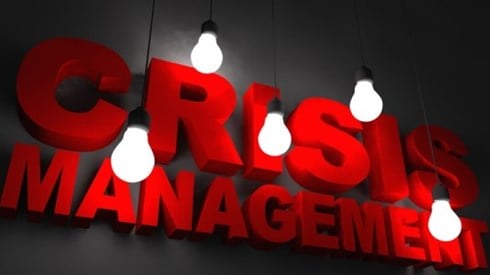Artificial Intelligence, Predictive Modeling, and Risk Management

April 17, 2020

Last month, I wrote about crisis management and the need to peer into the future. That ability, to make some rather educated guesses about what the future might hold, has been enhanced over the last decade by the growth in artificial intelligence (AI) and predictive modeling.
A conversation I had recently with Tim Gattie, vice president of industry strategy at Smartvid.io and a founding member of the Predictive Analytics Strategic Council (PASC), only reinforced that idea. The council was formed to assist the architecture, engineering, and construction industry in using artificial intelligence and predictive modeling to reduce the risks associated with construction projects. We talked about its recent white paper on this project.1
A natural reaction from some of our captive insurance readers may be "Well, that's interesting, but our captive doesn't insure construction risks." However, leaders, as I have noted before, need to have an inquisitive mind and be well read. So, I thought I might use this paper as a way of illustrating my point.
Having spent 30 years in the captive industry, one thing I learned is how we all crave data but are not always willing to provide our own to others. We assign special relevance to our claims and risk management information and believe it confers some competitive advantage that we lose by sharing it. My point is that you would think this would be especially true in the large project construction industry, where costs run into the billions of dollars and firms compete fiercely for these contracts. Yet the PASC exists and does so without a membership fee—the sole cost being the willingness to share data. Imagine what the captive industry or the pooling industry could learn if it operated in a similar fashion. Could this be a collaboration project for the Captive Insurance Companies Association or the Association of Governmental Risk Pools to pursue?
The white paper's title is Applying Predictive Analytics in Construction.2 I would encourage everyone to download a copy and read it. But, for those who need some encouragement, I have excerpted some points from the paper that I found insightful as you ponder how to use AI and predictive modeling in your own captive.
Many of you will recognize this quote since I have used it on multiple occasions: "All models are wrong; some models are useful." The paper addresses this issue early on by noting as follows.
The results from predictive models are produced by patterns established in the data we feed them and do not come from a simple executable formula. Put another way, they are only as good as the data we build them from and the continued performance of those patterns of data going forward. From the Artificial Intelligence Index Report 2019: Only 19 percent of large companies surveyed say their organizations are taking steps to mitigate the risks associated with explainability of their algorithms.... With this understanding, a vast majority of models currently deployed lack explainability but this trade-off is accepted in light of the value the models bring.
The good news is that predictive model accuracy can be measured and described. This allows us as users of predictive outputs to apply judgment based on the level of confidence reported by the model.
Ergo, we are getting better at understanding how much reliance to place in the models we use.
While AI and predictive modeling have made remarkable advances, it is not yet possible to remove humans from the equation. The authors comment, "the inaccuracy of predictive results cannot usually be explained away by a breakdown in process. One must look first at the model input data to ensure it is correct. If it is, then an anomalous result can only be explained.… Any AI output should be filtered through a human's understanding."
In talking about the ability to peer into the future, I find it of interest that predictive modeling expands in much the same way. According to the paper, predictive results can be obtained from three basic model types:
- Descriptive analytics, which reflect the values collected and thus provide hindsight, leaving the user to both deduce the insight and how to respond
- Predictive analytics are more difficult to build but provide some insight while leaving the user to determine what actions are necessary
- Prescriptive analytics, which are the most complex models but provide the end user with both a prediction and actions likely to produce the desired outcomes
Figure: Graph Describing the Different Types of Models and Their Value

Source: Predictive Analytics Strategic Council, Applying Predictive Analytics in Construction, April 1, 2020. Graph is adapted from Gartner Research. (Used by permission.)
Prescriptive analytics would be a very useful addition to what I have called "generative thinking": the ability to posit various scenarios and then create stories around how the captive would respond to these various events. In this case, the AI is doing the work and we users are then free to review the results and determine whether the actions described are really likely to result in the ends we are seeking.
The paper goes on to offer information on how to roll out this type of technology, ways to gather data and ensure transparency, and executive-level decision making using the results obtained from the models. All in all, it is a well worthwhile read.
As always, we value your thoughts. So, if you would care to share them after reading this article or the paper please provide feedback to [email protected] or to PASC.3
- Predictive Analytics Strategic Council (PASC), Applying Predictive Analytics in Construction, April 1, 2020 (PASC Operations Workstream Leads: Andrew Burg, Messer Construction; Timothy Gattie, Smartvid.io). Available for download on the PASC website (pasc.ai).
- Ibid.
- Find contact information for PASC at its website or in the white paper. Contact Mr. Gattie.
April 17, 2020

